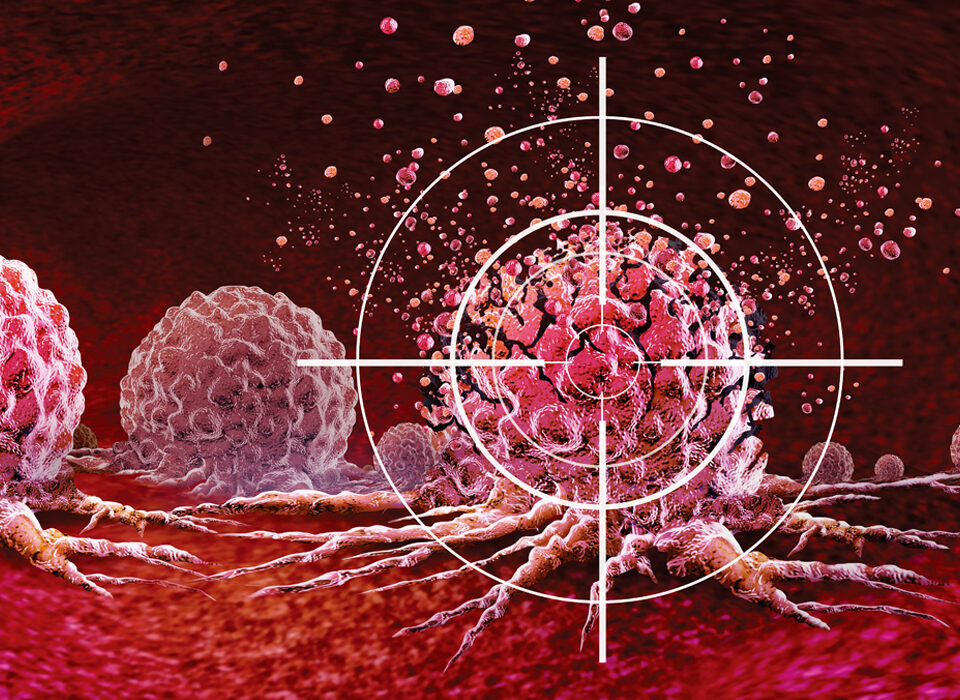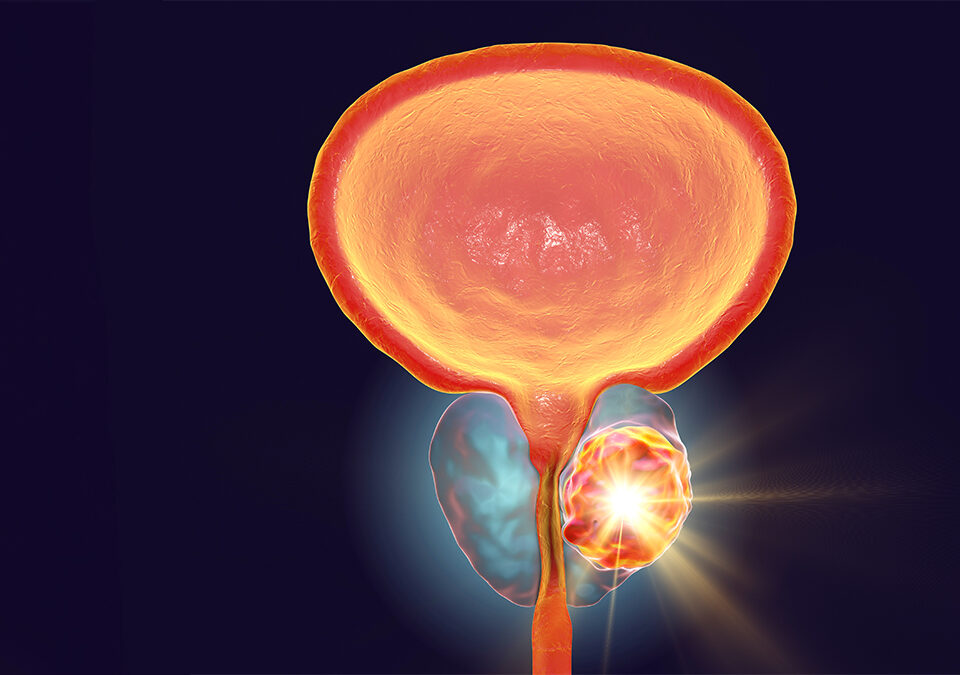

In September 2022, Ashok Muthukrishnan, MD, MS, founded Florida Theranostics Cancer Center in Jupiter to provide advanced nuclear medicine therapies for cancer.
Theranostics, a blend of therapeutics and diagnostics, involves using the same radioactive molecule for diagnosing and treating certain cancers.
“Hence, the name Florida Theranostics Cancer Center because we treat what we see on the imaging,” Dr. Muthukrishnan expounds. “I offer the therapeutic side of nuclear medicine to treat cancer.”
Dr. Muthukrishnan and his staff focus on using theranostics in treating prostate cancer, metastatic prostate cancer, neuroendocrine tumors and other malignancies.
“As a nuclear medicine physician, I specialize in all radioactive therapies for cancer,” he notes. “Prostate cancer and neuroendocrine tumors are the primary cancers we address.”
Among those therapies is a new drug that has brought promise in the treatment of some metastatic prostate cancers, or those that have spread from the gland to other parts of the body. Approved by the FDA in 2022, PLUVICTO® (lutetium-177 PSMA) is a radioactive medication used as a cancer cell-targeting compound called a ligand. Florida Theranostics Cancer Center is one of the first practices to use it.
Prostate-specific membrane antigens (PSMA) are proteins on the surface of prostate cells. In prostate cancer, the cells have a higher-than-normal amount of these proteins and are known as PSMA positive. The concentration of PSMA positive is relevant in locating cancer and pinpointing where a drug like PLUVICTO can treat it.
“This is a targeted treatment for patients whose cancer is progressing despite treatment and are running out of other options,” Dr. Muthukrishnan says. “Treatment with PLUVICTO helps patients take the next step toward improving overall survival. It can enhance quality of life and prolong lives more than the current standard of care, which is traditional chemotherapy.”
-Dr. Muthukrishnan
Prostate Cancer and PLUVICTO
PLUVICTO is prepared a day or two before the scheduled therapy because the radiation decays rapidly. There are only two pharmaceutical plants that make the drug: one in New Jersey and another in Italy, although more are planned by the manufacturer, Novartis.
“The medication is shipped in a vial within a lead container,” the doctor educates. “It is flown to Miami and then a courier brings it to our center in Jupiter. It is a solution that we draw up into a syringe and slowly infuse into the patient’s vein.
“The treatment takes five to 10 minutes, tops. We then monitor the patient for 15 minutes for any adverse reactions, which rarely occur. Once the patient is comfortable, we send them home.”
PLUVICTO is administered in a six-dose cycle with treatment every six weeks. During this time, routine lab work is done to check the patient’s blood count and liver and kidney function to ensure no harm is caused by the medication.
“PLUVICTO has a very good safety profile,” Dr. Muthukrishnan informs. “That’s one of its benefits. It has far fewer side effects than conventional chemotherapy. The main side effect is fatigue, which typically goes away within a few weeks.
“But we still must monitor for less common and potentially serious side effects, such as a drop in blood count or a drop in hemoglobin in the red blood cells. If there’s a significant drop in either, we must withhold subsequent treatments or modify the dosages accordingly.”
PLUVICTO works by targeting and binding to a PSMA. It emits radiation that breaks down the DNA within the cancer cells, destroying them.
“It delivers intracellular radiation, which is like a mini nuclear bomb going off inside the cells, if you will,” Dr. Muthukrishnan describes. “It is targeted radiation at the cellular level.”


JORDAN PYSZ / iFoundMyDoctor.com
Dr. Muthukrishnan, second from left, and his staff, from left, Chuck Jordan, Carmen Bollonio, and Steven Shields
Detecting Cancer
Before Dr. Muthukrishnan begins treatment with PLUVICTO, he must be sure the cancer cells are expressing the correct receptors for the medication to be effective.
“We do that by performing a PET (positron emission tomography) scan for that particular cancer,” Dr. Muthukrishnan describes. “For prostate cancer, it’s called a PSMA PET scan.
“The scan helps us determine the extent of the patient’s prostate cancer and how far it has spread within the body. We then target those same areas with the treatment.”
Ordering a PSMA PET scan is the standard of care for PSMA-positive metastatic prostate cancer. Patients referred to Florida Theranostics Cancer Center usually have already undergone the imaging test, ordered by their oncologists.
During the PET scan, a radioactive drug called a tracer is used to show normal and abnormal metabolic activity in the body. The term metabolic refers to the chemical processes occurring within the body that are necessary to sustain life. The radioactive compound collects in cancer cells, which lead to abnormal metabolic activity.
“The tracer for the PSMA PET scan is the same radioactive compound we use to treat the cancer, but the radiation is less potent on the diagnostic side than on the therapy side,” Dr. Muthukrishnan asserts. “The tracer used for the PET scan is Gallium PSMA (Ga-68).
“Gallium PSMA is the radioactive element that helps the radiologist visualize the cancerous tumors, and lutetium-177 PSMA is the radioactive element that has a therapeutic effect on the cancer cells within the tumors. Radiologists use it for imaging; we use it as therapy. But they go hand-in-hand; what we see on the PET scan is what we treat with PLUVICTO.”
Neuroendocrine Tumors
Dr. Muthukrishnan uses a similar process for the treatment of neuroendocrine tumors, which develop in the cells of the neuroendocrine system.
The neuroendocrine system, which integrates nerve and endocrine functions, regulates physiological processes through hormones that are released into the bloodstream. Most neuroendocrine tumors begin in the lungs, appendix, small intestine, rectum and pancreas.
“The medication we use to treat neuroendocrine tumors is LUTATHERA® (lutetium lu-177 dotatate),” the doctor states. “Dotatate is a peptide, or small protein, that responds to certain radioactive compounds.
“Dotatate therapy with LUTATHERA binds with this protein and can slow the growth of neuroendocrine tumors and, in some cases, halt their growth.
“The principle of treating neuroendocrine tumors is the same as for prostate cancer. First, we perform a dotatate PET scan and then we treat with lutetium lu-177 dotatate.
“For the imaging, we use the less-potent NETSPOT™ (Gallium Ga-68 dotatate). The areas visualized on the dotatate PET scan are the areas we target with LUTATHERA.”
As with PLUVICTO, patients receiving LUTATHERA are monitored for serious side effects. The most common include decreased blood cell count, increased liver enzymes, increased blood glucose (sugar), decreased blood potassium, nausea and vomiting.
Filling a Void
According to Dr. Muthukrishnan, there are limited places in Southeast Florida where patients can receive the treatments offered by Florida Theranostics Cancer Center.
“But patients also come to me from all the way up in Orlando to the north and from as far away as Miami to the south,” he explains. “There’s not another doctor within a 250-mile radius that offers this cancer therapy. Florida Theranostics Cancer Center is filling that void.
“While some of the larger hospitals are still trying to onboard these cancer therapies, I help to fill the void as an independent provider, offering these treatments at the community level. Any oncologist or urologist from any hospital can refer their patients to me. I usually work with them to come up with a patient-specific therapy plan at an efficient pace.
The treatment process typically takes longer for patients to get onboarded at a hospital or at a larger practice .” Dr. Muthukrishnan notes that for many large hospitals and large physician practice groups it is harder to take the leap to expand their services to include these advanced nuclear medicine therapies partly because the drug expense is high and the regulations and personnel requirements with radioactive therapies are a bit challenging.”
But that didn’t deter Dr. Muthukrishnan, who specializes in nuclear medicine and radiology and has more than 30 years of experience in the field.
“For 20 years, I worked for a major academic practice in Pittsburgh,” he says. “I moved to Florida in 2022, and I’m bringing the expertise of that academic research center to the community level to provide lifesaving therapies to cancer patients in South Florida.
“One of the reasons I came to Jupiter, FL is to provide fast access to these advanced therapies for cancer patients in the South Florida. Time is of essence when it comes to cancer care and my practice promises to deliver such critical therapies efficiently and effectively with the patient’s comfort in mind.”








Leave a Reply